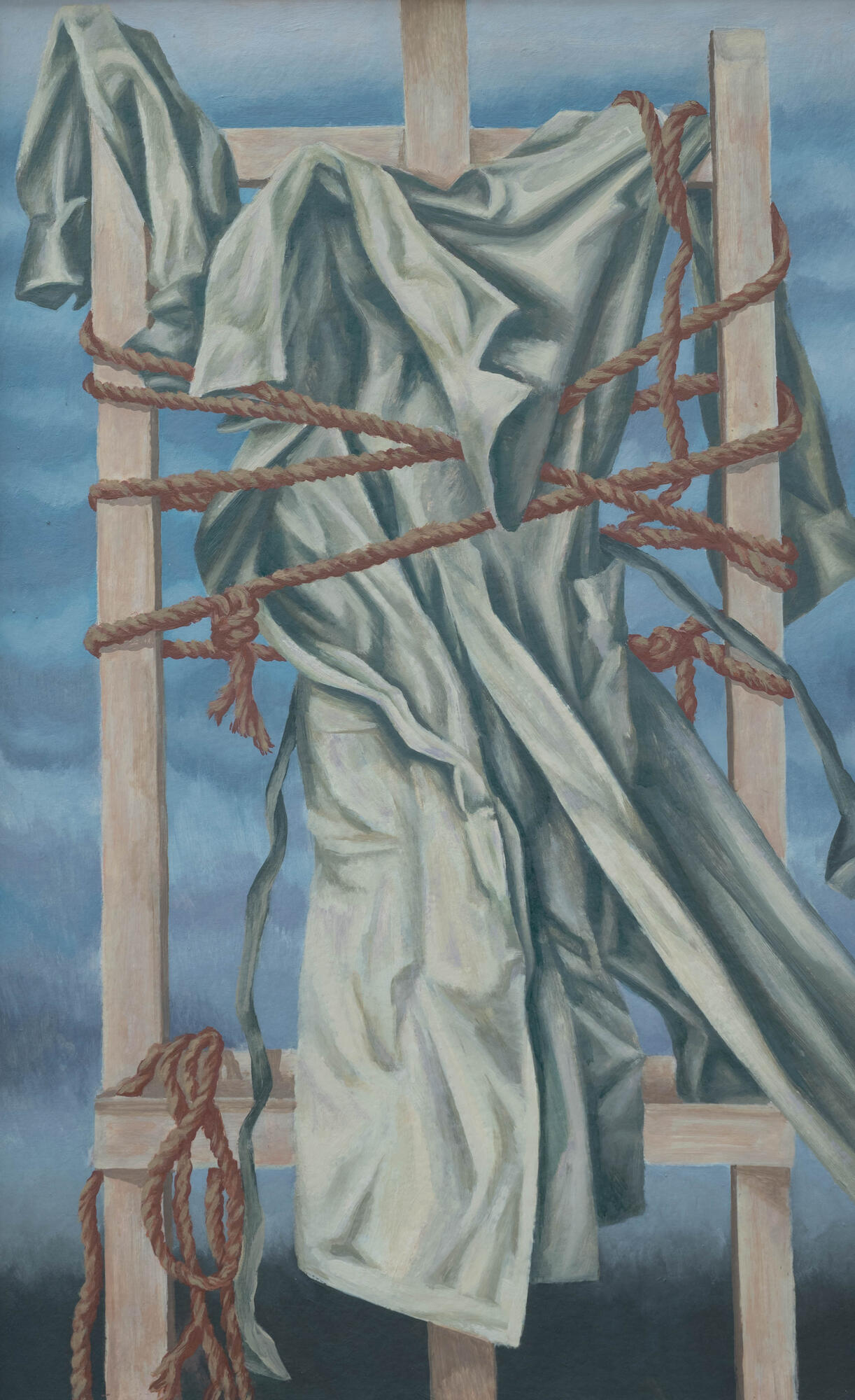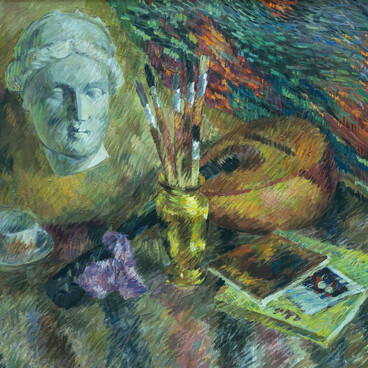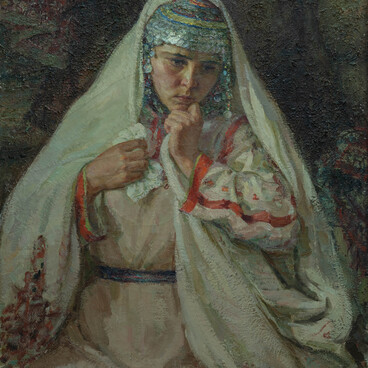The multifaceted painter Vladimir Fyodorovich Grishayev is best known as a muralist: while studying at the Art and Graphics department of the Chuvash State Pedagogical University, during his internship, he learned glass painting from the Lithuanian craftsman Algimantas Stoškus and subsequently created a number of monumental works, which still decorate various buildings of the capital. Apart from that, the artist also honed his skills both in graphics and painting. His works are deeply philosophical and vividly emotional at the same time.
In the triptych “Still Life with a Bathrobe”, the central part of which is presented in the exhibition, the artist raises the subject of devoting life to art, reflects upon the way painters interact with society, and contemplates the conflict between individuals and the society that tries to oppress them.
On the left and right parts of the triptych, “free” robes are depicted, sitting in a relaxed way on chairs over eloquent scarlet fabrics. The one on the right seems to have turned its head towards the other (this is evidenced by the shape of the collar), while the left one, on the contrary, seems to have turned away in contempt.
Grishayev might be making references to the New Testament images of Christ and two thieves — the penitent and the impenitent — and drawing parallels between a painter and Christ. The painter has no choice: he is bound by his own gift, he must create and speak the truth, even at the cost of his own life. The “ordinary” person, on the other hand, has free will in this regard: they can turn away from the painter and the truth that he professes, accept the way things are and adapt to them while ceasing to be a person in the true sense of the word. Or they can follow the path of truth, stop making compromises and believe in the victory of light.
This work has a “twin”, painted in the same year, titled “Still Life with Bruegel’s Dog”. Its coloring is more intense and contrasting: the crucifixion of the robe takes place against the dark night sky; the lower part of the canvas shows the hungry dog from Bruegel’s “The Hunters in the Snow” and wheels and gallows from “The Triumph of Death”. They conjure up the atmosphere of anxiety and hopelessness that imbued the picture. However, Grishayev considered this composition too straightforward and created the triptych so that the viewers could choose the meaning for themselves.
In the triptych “Still Life with a Bathrobe”, the central part of which is presented in the exhibition, the artist raises the subject of devoting life to art, reflects upon the way painters interact with society, and contemplates the conflict between individuals and the society that tries to oppress them.
On the left and right parts of the triptych, “free” robes are depicted, sitting in a relaxed way on chairs over eloquent scarlet fabrics. The one on the right seems to have turned its head towards the other (this is evidenced by the shape of the collar), while the left one, on the contrary, seems to have turned away in contempt.
Grishayev might be making references to the New Testament images of Christ and two thieves — the penitent and the impenitent — and drawing parallels between a painter and Christ. The painter has no choice: he is bound by his own gift, he must create and speak the truth, even at the cost of his own life. The “ordinary” person, on the other hand, has free will in this regard: they can turn away from the painter and the truth that he professes, accept the way things are and adapt to them while ceasing to be a person in the true sense of the word. Or they can follow the path of truth, stop making compromises and believe in the victory of light.
This work has a “twin”, painted in the same year, titled “Still Life with Bruegel’s Dog”. Its coloring is more intense and contrasting: the crucifixion of the robe takes place against the dark night sky; the lower part of the canvas shows the hungry dog from Bruegel’s “The Hunters in the Snow” and wheels and gallows from “The Triumph of Death”. They conjure up the atmosphere of anxiety and hopelessness that imbued the picture. However, Grishayev considered this composition too straightforward and created the triptych so that the viewers could choose the meaning for themselves.





